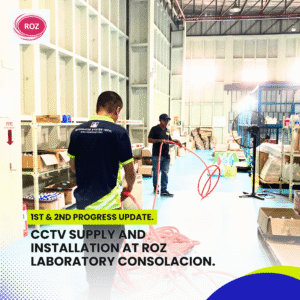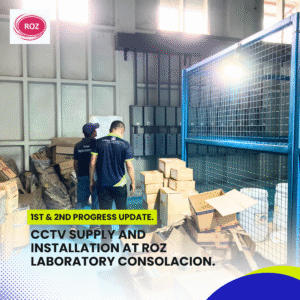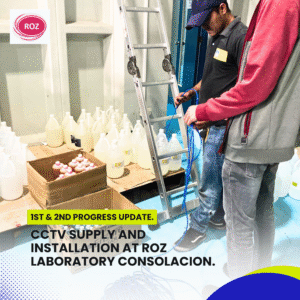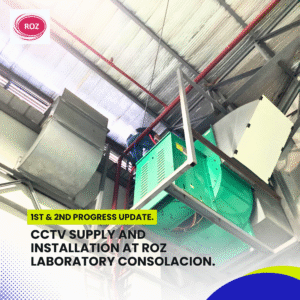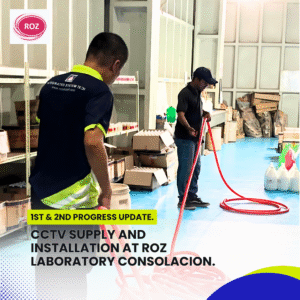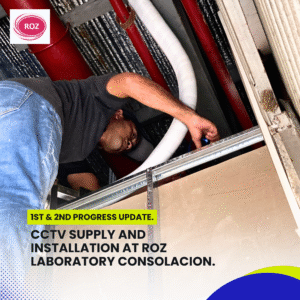CCTV Supply and Installation at Roz Laboratory Consolacion -- 1st & 2nd Progress Update.
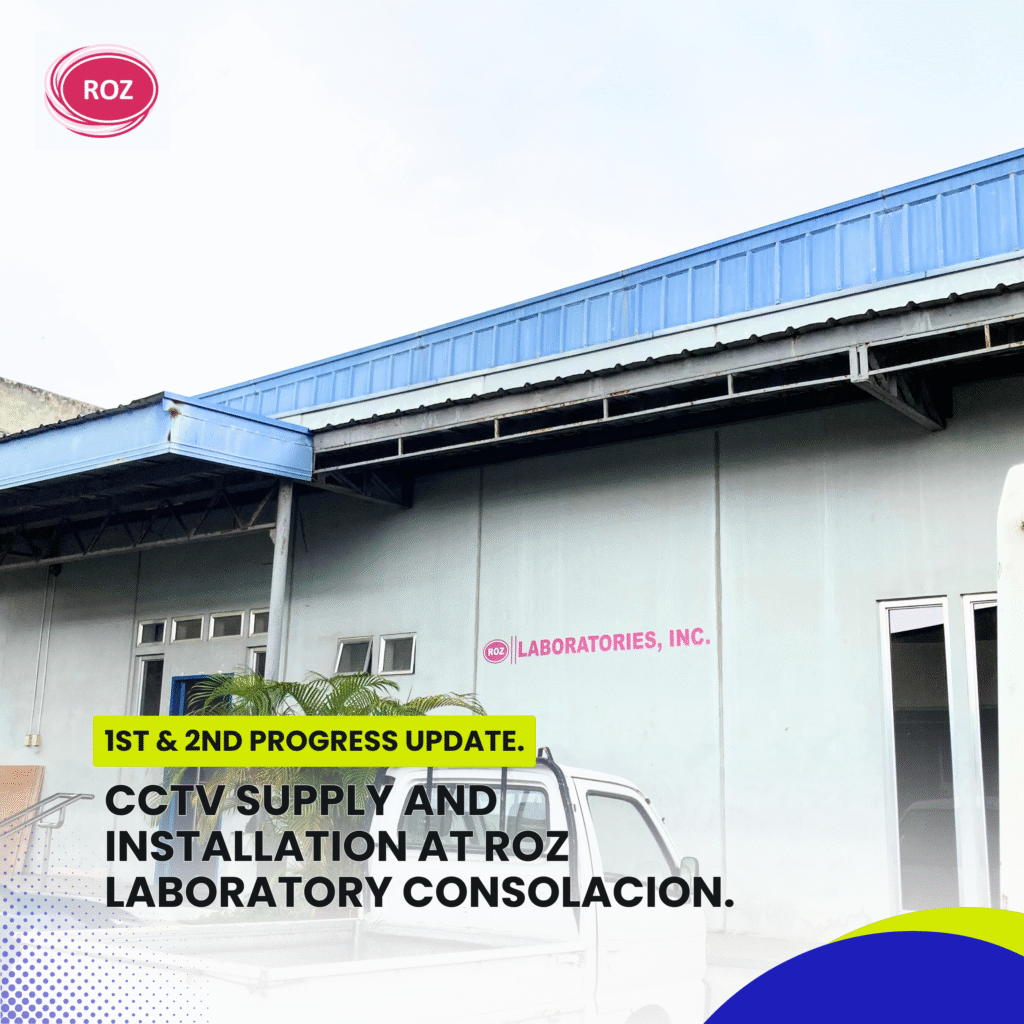
Introduction
Roz Laboratory in Consolacion has started improving its facility’s security system by installing a new Closed-Circuit Television (CCTV) surveillance system. This upgrade will help protect the laboratory’s staff, equipment, and daily operations.
This report provides an update on the progress made during the first and second stages of the project. These stages mainly involved placing wires in their correct locations and covering them with protective flexible hoses. Although these tasks may seem basic, they are very important to ensure that the rest of the installation process goes smoothly and safely.
Project Overview
The goal of this CCTV installation project is to provide full camera coverage for both the inside and outside areas of Roz Laboratory. Once complete, the system will allow for 24/7 monitoring to help prevent unauthorized access and to keep track of daily operations.
The full scope of the project includes:
Installing high-resolution CCTV cameras
Running data and power cables to connect the system
Protecting cables using flexible hoses
Setting up a Network Video Recorder (NVR) to store and manage footage
Testing the system to make sure everything works properly
Teaching Roz Laboratory staff how to use and manage the system
This report focuses on the initial preparation work, which includes cable placement and conduit protection.
1st Progress Update: Placing the Wires
The first part of the installation focused on getting all the cables (both data and power) in place before any equipment like cameras or recorders could be installed.
1. Site Walkthrough and Planning
Before starting, the team walked through the building and reviewed the CCTV layout plan. This plan showed where each camera would be installed and how the cables should be routed to connect everything to the central recording system.
2. Locating and Placing the cables
Once the plan was confirmed, the team began placing the wires in their correct positions. These cables were carefully routed through the building — in ceilings, along walls, and through corners — making sure they would not be exposed or cause any hazards.
This step was important because:
It ensures each camera will connect properly to the system
It avoids problems later during camera installation
It keeps the workspace organized and clean
By the end of this stage, most of the wiring was already in place, especially in key areas such as entrances, hallways, lab rooms, and storage areas.
2nd Progress Update: Installing Flexible Hose
Inside the control
After placing the wires, the next step was to protect them using flexible hoses. This is a safety measure to make sure the wires stay in good condition over time.
1. Why Flexible Hose Is Important
Flexible hose (also called flexible conduit) is used to cover wires and protect them from:
Accidental damage (like being stepped on or pulled)
Exposure to dust, water, or heat
Long-term wear and tear
In a lab setting, where cleanliness and safety are priorities, it’s also important that wires are neatly bundled and protected from environmental elements.
2. Where the Hoses Were Installed
Flexible hoses were installed in areas where the cables pass through:
Open spaces
Hallways and walkways
Around sharp corners or wall joints
Ceiling openings
The hoses were securely fastened to prevent any movement, making sure the cables inside stay safe and untouched. The materials used are strong, heat-resistant, and suitable for lab conditions.
3. Coordination with Laboratory Staff
To avoid interrupting normal laboratory activities, the team carefully scheduled the work and coordinated with Roz Laboratory’s staff. All installations were done while maintaining cleanliness and safety in all work areas.
area, the computer was positioned for easy access by operators while maintaining a clean and organized workspace. Cable management was carefully planned to reduce clutter and prevent wear on connections. Proximity to reliable power outlets was ensured to support stable operation and facilitate the use of backup power systems when needed.
Challenges and Solutions
A few minor challenges were encountered, which the team managed quickly:
Limited ceiling space: Some parts of the ceiling were very tight, making it harder to route the cables. The team used special tools and adjusted the route slightly without affecting coverage.
Difficult routing paths: In a few areas, walls or equipment made it hard to run wires as planned. The layout was slightly changed on-site, and the changes were recorded for future reference.
Working in active lab areas: Since the lab remained operational, extra care was taken to keep work areas clean and avoid any disruption to staff or processes.
Thanks to good planning and cooperation with Roz Laboratory staff, these issues were resolved quickly and didn’t delay the project.
Conclusion
The first and second progress stages of the CCTV installation at Roz Laboratory have been completed successfully. These included placing all wires in their correct locations and protecting them with flexible hoses to ensure durability, safety, and ease of installation.
Although this part of the project focused mainly on behind-the-scenes work, it is a very important foundation for the rest of the installation. Proper wiring and protection now will prevent problems later and ensure the system works reliably for years to come.
With careful planning, coordination, and attention to detail, the project is on schedule and progressing smoothly. The team is now preparing for the next phase, which will bring Roz Laboratory closer to having a secure, modern, and fully functional CCTV surveillance system.

